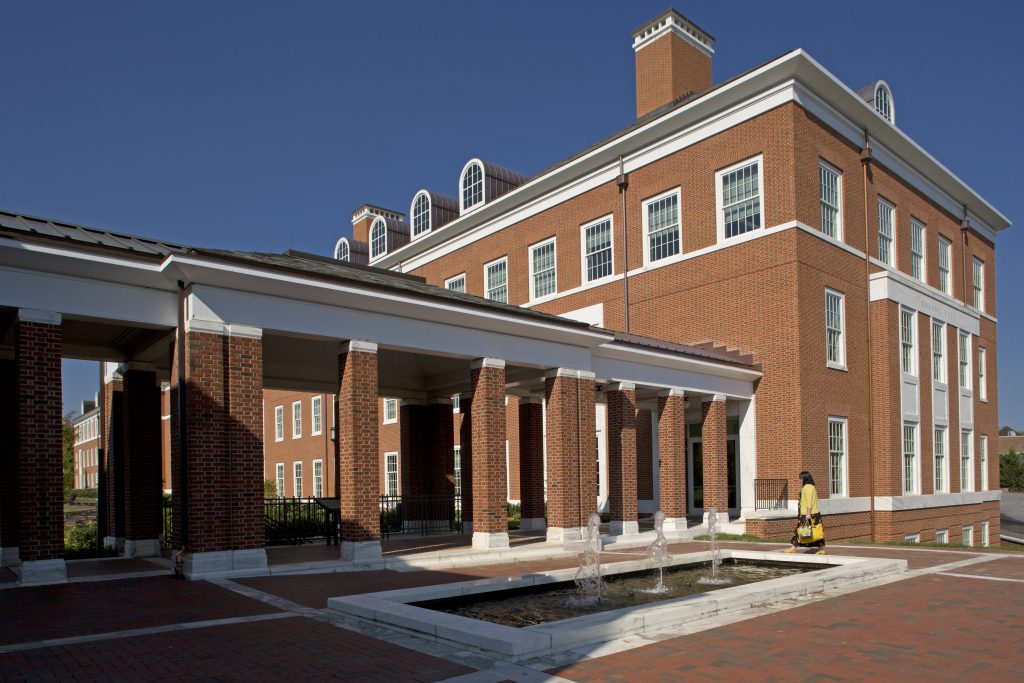Malone Hall, a multi-functional space for students, engineers, scientists, and medical researchers that opened on Johns Hopkins University’s Homewood campus in 2014, recently received a gold certification from the Leadership in Energy and Environmental Design program.
The internationally recognized LEED program, administered by the U.S. Green Building Council, provides a numeric score for green building design, construction, operations, and maintenance. Malone Hall received a score of 63 out of 108 possible points.
“Buildings that capture our commitment to sustainability also enhance our students’ experience and understanding of our broader impacts as an institution, and the efforts we’re making to embed those principles into the physical campus, curriculum, and the culture of Johns Hopkins,” said Ashley Pennington, JHU’s sustainability manager.
Situated on Decker Quad, Malone Hall’s beehive design gives the building added capacity, and its flexible room structures and small offices make it energy efficient. Other energy efficiencies include heat reutilization, an energy recovery wheel, radiant panels, and LED lighting.
“The efforts of our design and construction team continue to raise the bar on innovative, resource-efficient facilities that are essential to achieving our climate action goals,” Pennington said.
Malone Hall also features water conservation fixtures. Low-flow fixtures such as dual-flush toilets and electronic faucets reduce water consumption by approximately 40 percent. The building has a bioretention swale—a shallow, vegetated, landscaped depression with sloped sides—that manages storm water runoff, eliminating any impact of the building to the neighboring area. Beneath the swale is a drain system that conserves water, allowing Malone Hall to create minimal impact on the environment and surrounding watershed.
Malone Hall’s eco-conscious design and construction support Johns Hopkins’ pledge to reduce greenhouse gas emissions by 51 percent by 2025. In July, the annual sustainability report showed that the university has achieved a 35 percent reduction since 2008 through energy conservation strategies.
